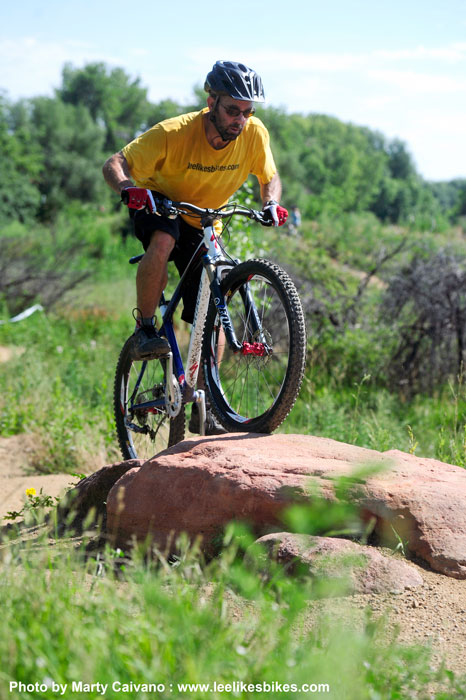Command Post vs. quads
Lee,
I got a Command Post this year and absolutely love how it changes the riding experience. Even here in Minnesota on primarily cross country trails I end up using it all the time.
I have noticed a couple of “issues” using it though. The first is pretty minor, more of an annoyance than anything else. With the post dropped all the way it throws off the angles between your arms, hands and brake levers. I only really notice it on longer downhills, but I would imagine out west that it may be something to take into consideration-maybe “split the difference” in your set up.
The other issue is a bit more of a problem. As a cross country rider with a thoroughly mediocre fitness level I have noticed my quads reacting poorly when pedaling with the seat lowered or if just “hovering” over the saddle when it is dropped. Yesterday while climbing out of the bottom of an extended downhill stretch my quads just locked up with cramps. I had to get off the bike for a few minutes. After that if I dropped the saddle I could feel my quads start to freak out again. Twice more in just a couple of miles I was off the bike trying to get my legs to uncramp so I could get back to the trailhead.
I am wondering if you have heard of, or even felt these effects yourself, and if you can suggest ways to mitigate the issue.
Thanks
Sean
Hey Sean,
What a great question.
Thoughts:
Angles
Adjust your levers so they’re at the perfect angle when you’re braking in your attack position. You should never do significant braking in the saddle.
For general riding, I set brake levers at about 45 degrees. For serious DH where I’m braking harder, lower and farther back, I set the levers closer to 30 degrees from horizontal.

The ability to pedal out of the saddle with fine balance and decent power is useful on all sorts of terrain — and all sorts of seat heights. Photo by Yosei Ikeda. |

Leave a Reply
Want to join the discussion?Feel free to contribute!